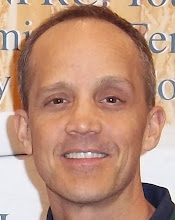By NFRC Chairman, Steve Strawn
Throughout the July virtual meeting, I observed the number of people voting and soon realized I was witnessing an attentive and highly engaged audience in action.
This level of engagement reminded me just how progressive NFRC really is as an organization.
On completing our second virtual meeting, it appears that we have fully embraced the technology that enables us to communicate across time zones and geographic borders. Furthermore, we’ve shown we can achieve an effective level of synergy in a virtual environment.
Both of these remarkable accomplishments help us advance our mission, articulate our vision, and garner even broader support for our initiatives as we work together to develop new rating programs and maintain our existing documents, making them more meaningful for the public.
One of the key challenges NFRC continues to face is communicating its concerns clearly so others can relate to our position, connect to our underlying values, and commit to supporting our initiatives.
This meeting convinced me we understand our strategic objectives and appreciate the members’ needs to the point where we can make strides toward our goals whether we are gathered together in the same room or spread across the globe.
Given the resounding success of our second virtual meeting and the overwhelming support it has received, I envision NFRC carrying this format into 2012 and beyond.
Thank you to everyone who participated, and I look forward to seeing all of you in Atlanta for the Fall 2011 meeting (in person!)
Throughout the July virtual meeting, I observed the number of people voting and soon realized I was witnessing an attentive and highly engaged audience in action.
This level of engagement reminded me just how progressive NFRC really is as an organization.
On completing our second virtual meeting, it appears that we have fully embraced the technology that enables us to communicate across time zones and geographic borders. Furthermore, we’ve shown we can achieve an effective level of synergy in a virtual environment.
Both of these remarkable accomplishments help us advance our mission, articulate our vision, and garner even broader support for our initiatives as we work together to develop new rating programs and maintain our existing documents, making them more meaningful for the public.
One of the key challenges NFRC continues to face is communicating its concerns clearly so others can relate to our position, connect to our underlying values, and commit to supporting our initiatives.
This meeting convinced me we understand our strategic objectives and appreciate the members’ needs to the point where we can make strides toward our goals whether we are gathered together in the same room or spread across the globe.
Given the resounding success of our second virtual meeting and the overwhelming support it has received, I envision NFRC carrying this format into 2012 and beyond.
Thank you to everyone who participated, and I look forward to seeing all of you in Atlanta for the Fall 2011 meeting (in person!)

